The role of Umberto Nobile and Felice Troiani in the development of Soviet-Italian cooperation in the field of airship construction
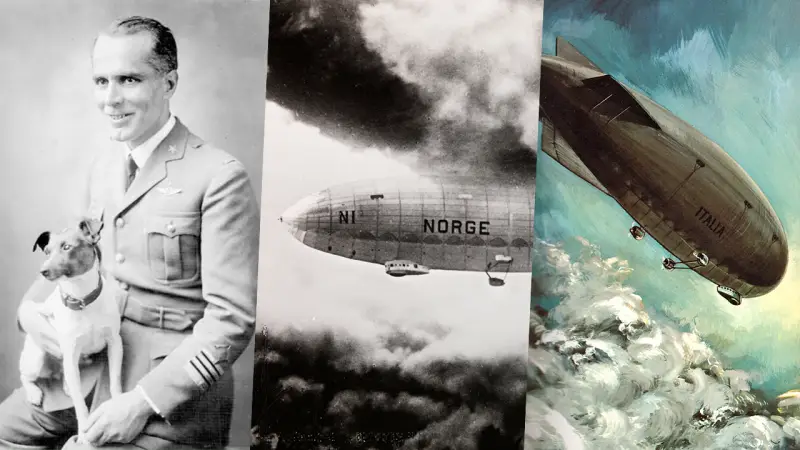
The fascists' coming to power in October 1922 did not at all become an obstacle to the development of relations between Italy and the USSR. A week after his appointment as Prime Minister, on November 6, 1922, Benito Mussolini informed the Soviet representative in Italy V.V. Vorovsky about his readiness to establish diplomatic relations between the countries, and on February 7, 1924, notes were exchanged on Italy’s recognition of the government of the USSR [2] .
After the establishment of diplomatic relations between the countries, the Duce proposed concluding a Soviet-Italian treaty of non-aggression and neutrality, but soon postponed negotiations, fearing complications with other powers.
– points out historian I. A. Hormach.
In the field of economics, the mutual interest of Italy and the Soviet Union was obvious, since the need of the Italian market for Soviet raw materials, and the Soviet market for Italian industrial products, was very great. The fact that in 1926–1927 is eloquent. fuel oil for the Italian military fleet was supplied only from the USSR [2].
In the second half of 1927, speaking at a session of the Central Executive Committee on December 10, 1928, M. M. Litvinov described Soviet-Italian relations “as an example of correctness, despite the differences in socio-economic systems”. The Italian leadership was also satisfied with them. The General Secretary of the Fascist Party, R. Farinacci, wrote: “Moscow and Rome are now two poles of the struggle for the political and social revolution of future generations. This struggle must remain purely ideological.”
Despite serious ideological differences, during this period relations between the Soviet Union and fascist Italy were based on close economic cooperation, including in the field aviation. In particular, story airship construction in the USSR is inseparable from the contribution of engineers officially invited from Italy, who imported technology to the USSR [4].
Umberto Nobile and Felice Troiani had a significant influence on the development of this industry in the Soviet Union.
The crash of the airship "Italy" and the rescue of its crew
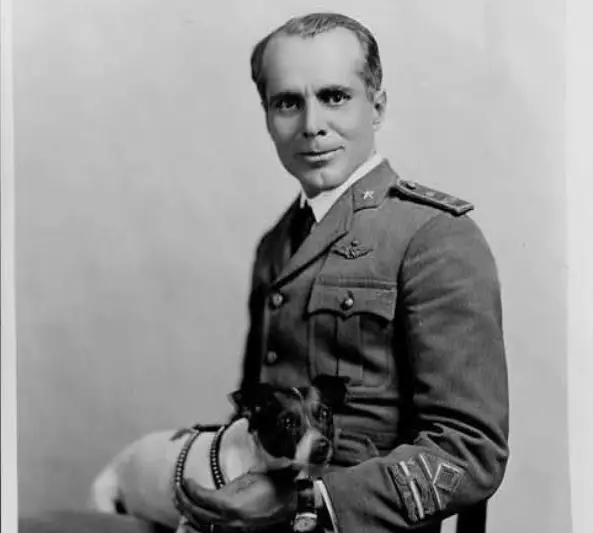
Umberto Nobile (1885–1978) Italian airship builder, Arctic explorer, general (1926). Two flights to the Arctic - in 1926 and 1928 - brought Nobile worldwide fame. In April-May 1926, the airship, named "Norway", made its famous flight, first from Italy to Spitsbergen with stops in Britain, Norway and Leningrad, and then without landing through the North Pole to Alaska. And in May 1928, this ship, named “Italy,” made several flights to the polar regions from a base on Spitsbergen. In the last of them, he reached the North Pole and, without landing, headed back. However, due to strong winds, the airship veered off course and crashed.
An important role in strengthening ties between Italy and the Soviet Union was played by the USSR's rescue of the crew members of the airship Italia, which crashed in the Arctic Ocean. It’s worth talking about this in a little more detail.
As you know, the government of Benito Mussolini sought to strengthen the glory of Italian aeronautics, and therefore attached great importance to the expedition on the airship “Italia”. The ceremonial departure took place on April 15, 1928, all Italian newspapers applauded this event, but on May 25 the airship crashed about 100 km from the island of North-East Land (Spitsbergen archipelago) [1].
From the impact on the ice, the control nacelle and the rear engine nacelle were torn off from the power structure of the airship and were thrown down, while the airship itself immediately rose into the air again and was carried away.
The crashed balloonists had to fight for survival for more than a month. Fortunately, among the wreckage they found some food supplies, a tent, which they painted red to attract attention, but most importantly, an emergency shortwave radio station. With its help, they tried to transmit distress signals and their coordinates, which were caught by the Soviet radio amateur Schmidt from the Arkhangelsk region [1].
Norwegian, Swedish and Italian planes headed to the search area. On June 20, the Italian pilot Umberto Maddalena, flying an S.55 seaplane, discovered the crash site and dropped a food cargo. On June 23, the Swedish pilot Lundborg landed on the ice and took the wounded Nobile out of the camp. However, during the second landing, the plane capped, and Lundborg himself became a prisoner of the “Red Tent”.
Initially, the USSR reacted somewhat coolly to the expedition of the airship “Italia”, since, according to some assumptions, Mussolini wanted to annex Franz Josef Land to his possessions. However, after the disaster, the icebreakers Malygin and Krasin were sent to the Spitsbergen area. Pilot B. G. Chukhnovsky from the Krasin discovered A. Mariano and F. Zappi, who, together with F. Malmgren, who died under unclear circumstances, having lost hope that they would be discovered, decided to walk to Spitsbergen. They, like those remaining at the “Red Tent,” were saved by “Krasin” [1].
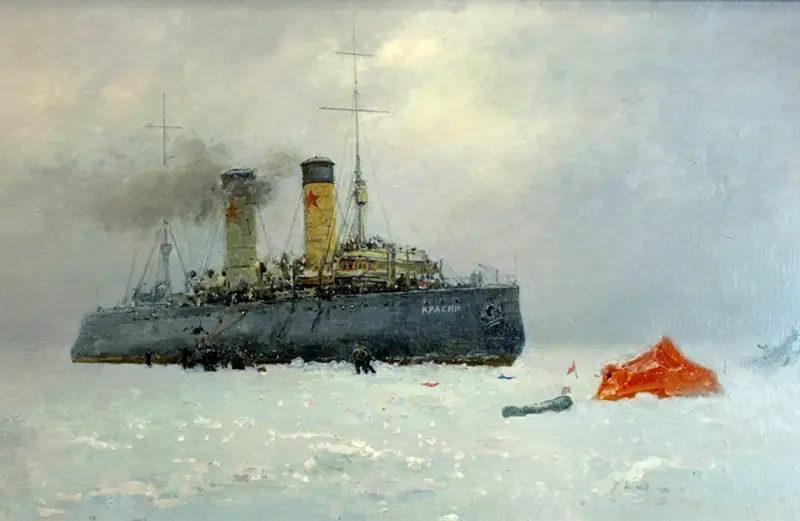
The failure of the expedition marked the end of Nobile's career in Italy as an airship designer. In late autumn 1928, a commission of inquiry was created to investigate the causes of the crash, headed by Admiral Umberto Cagni [5]. The findings of the commission, published on March 4, 1929, were unfavorable for Nobile - the commission of inquiry accused him of the incorrect maneuver of the aircraft, which led to the tragedy, as well as the fact that he was the first to leave the scene of the crash on the Lundborg plane [4].
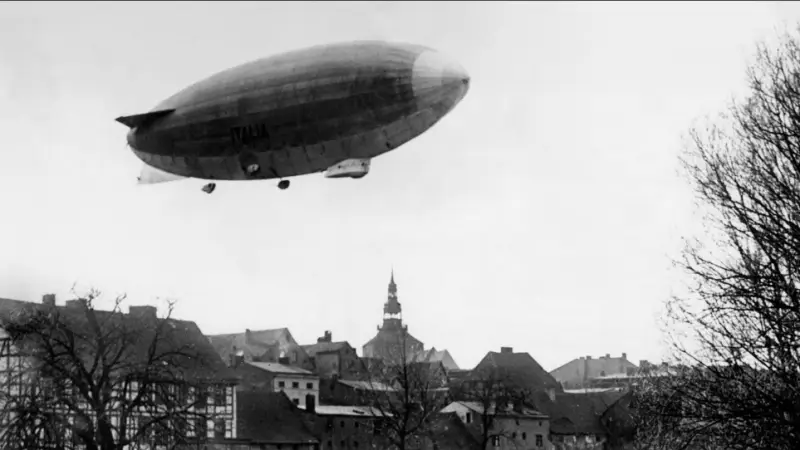
The N-4 Italia was the fourth in a series of semi-rigid airships built at the Aeronautical Structures Factory in Rome, headed by Umberto Nobile. "Italy" was built in 1927, the length of the airship was 105,4 meters.]
However, the biggest problem was the international prestige of Italy, undermined as a result of the unsuccessful mission, which the country spared no expense in achieving. Because of this failure, the construction of airships in the country was stopped, and soon the Minister of Aviation Italo Balbo completely banned it.
Nobile was forced to complete his work. In these circumstances, he gratefully accepted the offer of Professor R. L. Samoilovich to take part in a journey to Franz Josef Land on board the icebreaker "Malygin" in order to shed light on the disappearance of "Italy" and the fate of six comrades (along with the airship, they were carried away a group of six people whose fate was unknown). However, bad weather conditions prevented the ship from approaching Alexandra Land, where, according to Nobile, he could find elements useful for the investigation [5].
Upon returning from the expedition, he received an offer from the Soviet side to head the design work at the Dirizhablestroy enterprise at the Dolgoprudnaya station (now the city of Dolgoprudny) as a designer and consultant on technical issues. Nobile agreed if the Italian government did not interfere with this [4].
Upon his return to Italy, Nobile presented a report on the proposal made to him to the secretary of the National Fascist Party, Giovanni Giurati, asking Mussolini's permission for this mission. Having received Jurati's consent and informed the Italian Ambassador to the USSR Bernardo Attolico, Nobile, however, faced opposition from Balbo. Nevertheless, Mussolini did not object to the departure of Nobile, whom he disliked, abroad and, among other things, allowed him to take to the USSR the drawings of airships of the Norge and Italia type [4].
In May 1932, Nobile arrived in Moscow, where he was accommodated in an apartment on the corner of Lubyanka and Myasnitskaya Street.
Activities of U. Nobile and F. Troiani in the USSR
Together with Nobile, the following went to the Dirigiblestroy: engineers Felice Troiani and Luigi Visocchi, draftsmen Nicola De Martino and Giacomo Garutti, as well as several workers. The Umberto Nobile Documentation Center in Vigna di Valle houses the contracts concluded by Dirigiblestroy with Nobile and his nine Italian employees [1].
Design engineer Felice Troiani (1897–1971) was quite an interesting person - it was he who designed the famous “red tent”. Much the opposite of Nobile, Troiani was also a member of the Italia expedition.
It should be said that if Nobile, by the time of his departure to the USSR, had already parted ways ideologically with the fascists, then Troiani, on the contrary, on the eve of his departure to the Soviet Union, joined the fascist party. The book of memoirs “What I Saw in Soviet Russia”, published in Italy in 1945, speaks about Nobile’s views. It shows the author's deep sympathy for the Soviet Union [4].
Troiani was quite skeptical about the USSR, which he wrote about in his autobiography entitled “The Tail of Minos” (not translated into Russian). Historian Polina Dyakonova notes that while Nobile plunged into the whirlpool of life in the Soviet capital with great enthusiasm, Troiani was extremely skeptical about Soviet methods of work. According to Troiani, Nobile’s enthusiasm was probably fueled by the hope of regaining his position in Russia, lost in Italy.
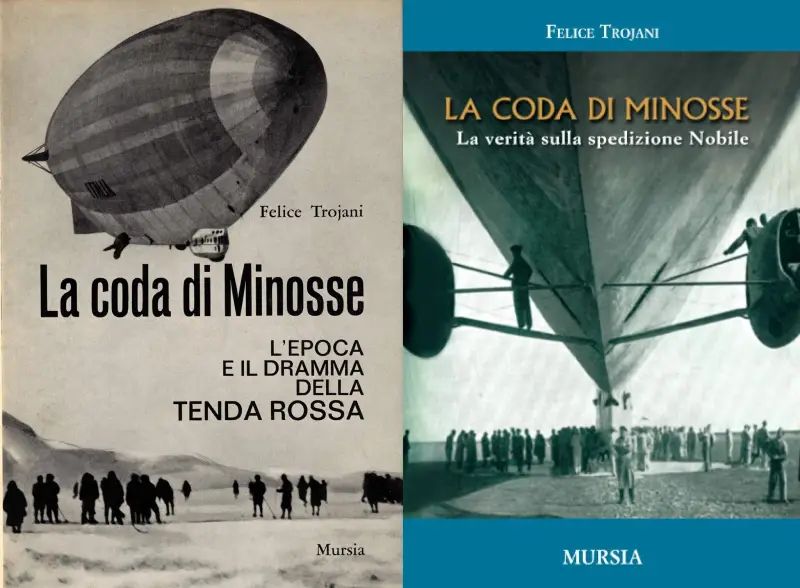
Covers of Felice Troiani's autobiographical novel The Tail of Minos
Soon Nobile began work, but it was seriously complicated by the lack of an organized technical base. The office of "Dirizhablestroy" changed its address four times.
In “Dirizhablestroy” it was necessary to start all over again, to create everything anew. Nobile took up the matter with the ardor of a southerner and the efficiency of a great specialist. At first, 80 young engineers, DUK graduates, worked under Nobile’s leadership. Such a large number of inexperienced engineers was even a hindrance in the work. It was hampered by staff turnover and the inability to rationalize the activities of the design bureau in our own way [6].
The official five-year plan was absolutely fantastic - following it, it was planned to build 58 semi-rigid and rigid airships. Here is what Nobile himself writes about this:
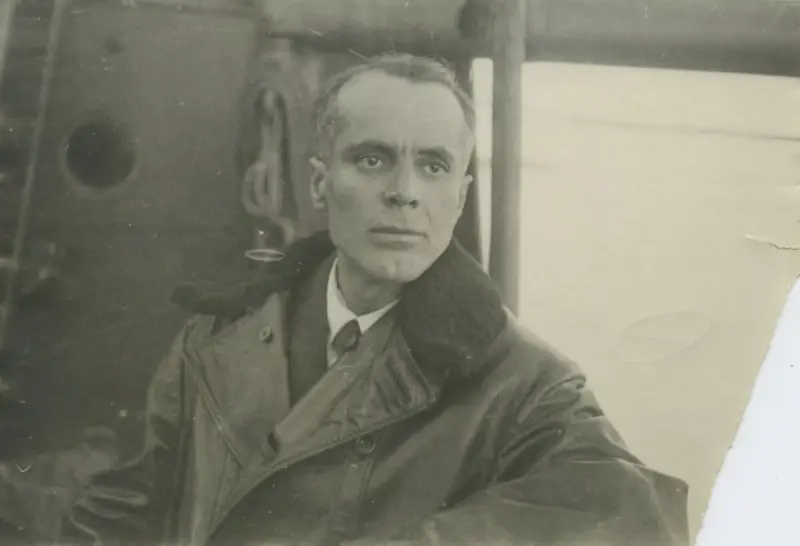
But in the end, of course, it was not possible to carry out this plan.
The first airship designed by Nobile, which received the identification mark “USSR-B5” with a volume of 2 cubic meters. m, was built during September 340 – January 1932. Skilled Italian workers (1933-3 people), with the help of Soviet colleagues, performed a miracle. Working on old low-power machines, at zero temperature in the workshops, and resorting to ingenious tricks, they created metal structures in a few months [4].
The first Soviet semi-rigid airship B5 took to the skies on April 27, 1933. Photographs reveal its external resemblance to the Italian ship Mr with a volume of about 1 thousand cubic meters, which was produced at the SCA plant in 1924 - it remains to this day the smallest semi-rigid airship in the world and one of the smallest airships in general. It is possible that Mr served as the starting point for the B5 project, although there were noticeable differences in their designs [7].
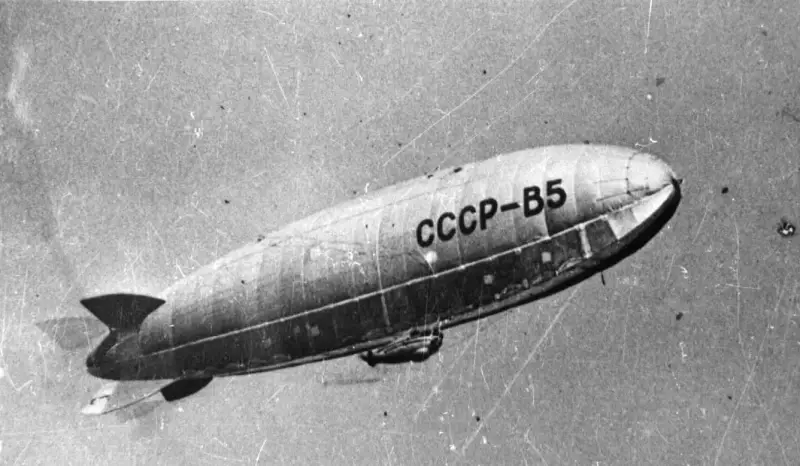
The construction of the B-5 airship took place under difficult conditions. At the end of February 1933, Nobile suffered an acute attack of appendicitis, which turned into life-threatening peritonitis. He was urgently hospitalized in the Kremlin hospital and was able to return to work only in May. While Nobile was undergoing treatment, responsibility for B-5 passed completely to Troiani.
Due to the fact that the work was carried out slowly and with great difficulties, the head of Dirigiblestroy, Feldman, asked Troiani to give a description of each of the Italian workers who arrived with Nobile. The fact is that after a year from the beginning of the contract, only one experimental B-5 airship was built, while it was planned to build and test several airships by that time.
Troiani reported that most of the Italians invited by Nobile were not actually certified engineers and did not have much experience in the construction of airships, but were most often simple workers from the Aeronautical Structures Factory. Nobile introduced them to the USSR as engineers [1].
Subsequently, this caused a scandal between Nobile and Troiani and the final break between them. Troiani described this conflict as follows: “He told the Italians that I was a communist, and before the Russians he claimed that I was a fascist spy.” Troiani notified his superiors that he was asking to return to his homeland, since he no longer wanted to work under Nobile [1].
As a result, Feldman offered Troiani the position of chief designer at the Tushino Aeronautical Training Center (VUK).
Troiani took an active part (he was the chief designer) in the construction of the airship, which initially bore the working name VUK-1, and then V-7 (Chelyuskinets). However, when the airship was already ready, the day before the first flight, the boathouse, along with the airships located there, burned down after being hit by lightning. After the loss of the airship V-7, similar airships V-7bis and V-8 were built at Dirigablestroy. The last of the Soviet semi-rigid airships built, the B-9, was based precisely on Troiani’s ideas.
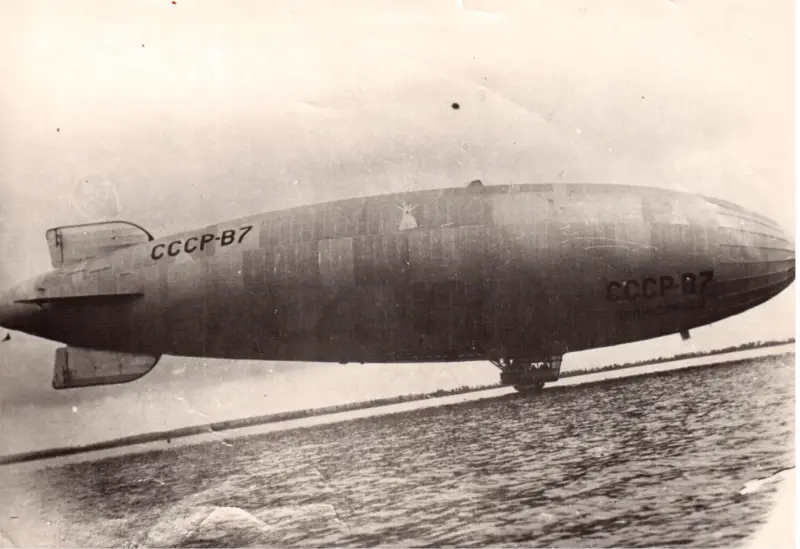
It should be noted that Troiani generally treated his work with some irony. In his memoirs, he wrote that he did not believe in the future of the airship, believing that it was destined to give way to the plane. Troiani returned to his homeland at the end of 1934.
As for Nobile, the main airship built under his leadership was the B-6. Its design began back in September 1932, when the workshops in which it was supposed to be built did not yet exist.
By November 1934, it was possible to prepare the B-6 airship for flights. It was named "Osoaviakhim" and became the largest and best of the Soviet airships. In addition, it was superior to its Italian prototype in terms of flight characteristics. Cruising speed was increased from 90 to 104 km/h. The gondola could accommodate up to 20 passengers. The payload was able to be increased to 8 kg. Nobile was very proud of the result achieved [500].
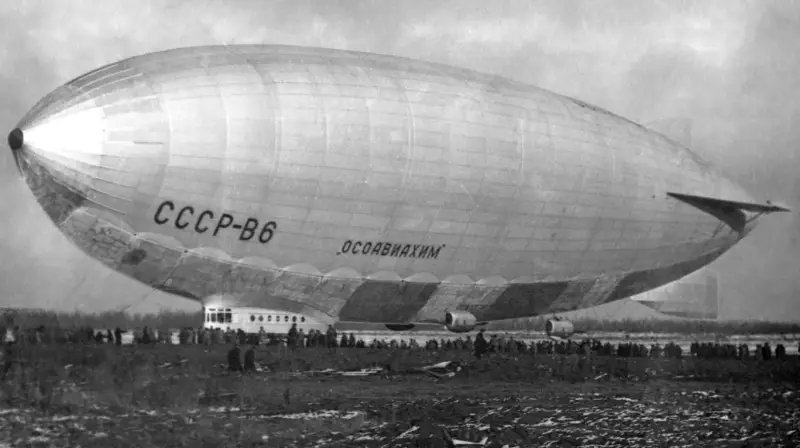
In September 1937, the airship B-6 set an absolute world record for the duration of an airship's flight, flying along the route Dolgoprudnaya - Novgorod - Shuya - Ivanovo - Kalinin - Bryansk - Kursk - Penza - Voronezh - Vasilsursk and back.
In February 1938, the B-6 airship under the command of N. S. Gudovantsev set off for Murmansk with the goal of evacuating Papanin’s expedition from the drifting North Pole station. From Moscow to Petrozavodsk the flight took place in difficult conditions. The cloud cover was low, it snowed from time to time, and the metal parts of the airship became icy.
Two hours before flying over Petrozavodsk, the airship encountered dense fog and flew blind almost until the moment it approached the city. 18 km from the White Sea station, the airship hit a mountainside and crashed. Rescue teams on skis found 13 dead and 6 survivors [4].
Leaving the USSR at the end of 1936, Nobile rejoiced at the progress achieved:
Italian engineers and Soviet reality
In the preface to the Italian edition of his book, Nobile wrote that he was connected with the USSR by a feeling of enormous gratitude, “which became even stronger when the Russians invited me to go work with them, precisely at the saddest period of my life, since at that time it became extremely difficult for me to live in my country” [8].
In general, Nobile had some sympathy for the Soviet Union, despite the fact that at Aeroflot and at Dirigablestroy the attitude towards him and the Italian presence in general was ambiguous - many respected him as a professional, but some contemptuously called him “fascist” generalishko."
Nobile, generally little experienced in politics, naively overestimated Soviet democracy, mistook the scenery for reality and sometimes went too far in his speeches and in his relations with his colleagues at Dirigiblestroy. So, at first he told the workers that trade unions are obliged to protect their interests, and therefore they must demand an improvement in their financial situation. This did not go unnoticed by the relevant authorities [7].
In February 1933, N. Kuibyshev, head of the Naval Inspectorate of the NK RKI, reported to Stalin:
In personal communication, Nobile was not always simple and even. On the one hand, those who worked with him noted his constant friendliness, attention to the interlocutor, simplicity and accessibility.
– recalled airship designer Vladimir Shevyrev, who personally communicated with Nobile.
He invited fellow designers to his home for Italian pasta and currency Riesling from Torgsin. Chess players also often dropped by to see him on Myasnitskaya, sometimes staying up late at the game and running away to catch the last metro train.
On the other hand, he was very sensitive to any attempts not even to criticize, but simply to take a little deeper interest in his engineering solutions.
The conflict between Nobile and Troiani caused enormous damage to Nobile's reputation in the Soviet Union and the further work of the Dirigiblestroy enterprise. A significant role was also played by the rumors spread by them, mutual accusations of “fascism”, “espionage”, etc. Apparently, Nobile and his comrades were not fully aware of the possible consequences, not only for them, but also for their Russian colleagues. After this conflict, writing complaints and denunciations to higher authorities became commonplace at the enterprise [1].
Many Italians who remained at Dirigablestroy after the departure of Nobile and Troiani, during the period of repression of 1937–1938. were arrested on charges of sabotage and industrial espionage. Total in 1937–1938 199 Italians were arrested in the USSR. For example, Troiani's closest collaborators (both Italians and Russians) were arrested, and many were repressed. They were accused of having a close acquaintance with Troiani. The paradox was that after returning to Italy, Troiani was interrogated regarding his alleged communist sympathies and even espionage activities for the Soviet Union.
Aeronautics and aviation historian Alexei Belokrys notes in his book:
Nevertheless, it was Nobile’s arrival in the USSR that allowed work on the design of Soviet airships to be carried out at a high technical level for its time. In particular, as mentioned earlier, Benito Mussolini not only did not express any objections to Nobile’s departure to the Soviet Union, but also gave him permission to take out the drawings of Italian airships, which allowed Nobile to take full advantage of the results of his previous design work in Italy. This episode may also serve as confirmation of the favorable climate in Soviet-Italian relations at this moment [1].
The USSR managed to become an airship-building power in a short time, and in this branch of industrial production it completely adopted the ideas of Italian designers. Several Soviet airships were built using Nobile’s semi-rigid design, including the largest, the B-6, which brought several records to the USSR. However, its disaster on February 6, 1938 caused the Soviet Union to abandon further construction of airships.
Использованная литература:
[1]. Dyakonova P. G. Soviet-Italian relations in the field of aviation: 1924 - June 22, 1941, dissertation of candidate of historical sciences - M., 2019.
[2]. Makulov S.S. Problems of perception of Italian fascism in the Soviet press, 1922–1941, monograph - M., MGIMO-University, 2021.
[3]. Hormach I. A. Italy and the USSR. 1924–1939. Diplomatic and economic relations. M., 1995. P. 12.
[4]. Dyakonova P. G. Activities of Umberto Nobile and Italian airship construction specialists in the USSR in 1931–1935. / P. G. Dyakonova // Historical journal: scientific research. 2018. No. 4. – pp. 174–183.
[5]. Francesco Surdich. Nobile Umberto. Dizionario Biografico degli Italiani, Volume 78: Natta – Nurra, Istituto dell'Enciclopedia Italiana, Rome 2013.
[6]. Brode B. G. Umberto Nobile. – St. Petersburg: Nauka, 1992.
[7]. Alexey Belokrys. Nine hundred hours of heaven. The unknown history of the airship "SSSR-V6". – M.: Paulsen, 2017.
[8]. Nobile U. Quello che ho visto nella Russia sovietica. Roma: Atlantica, 1945.
Information